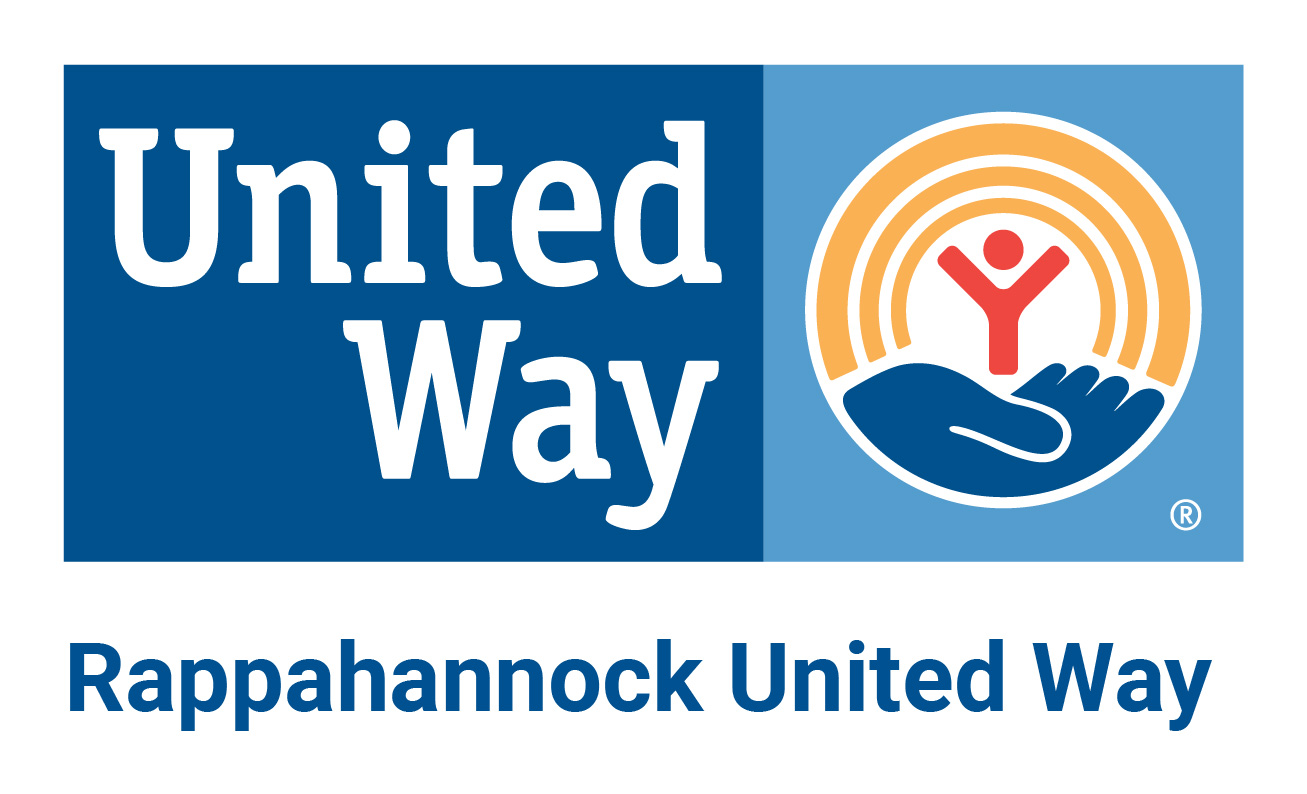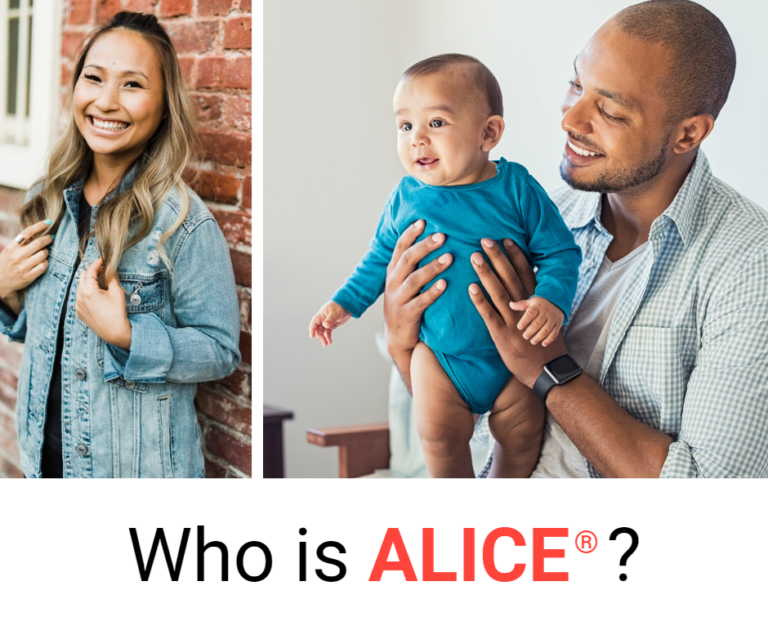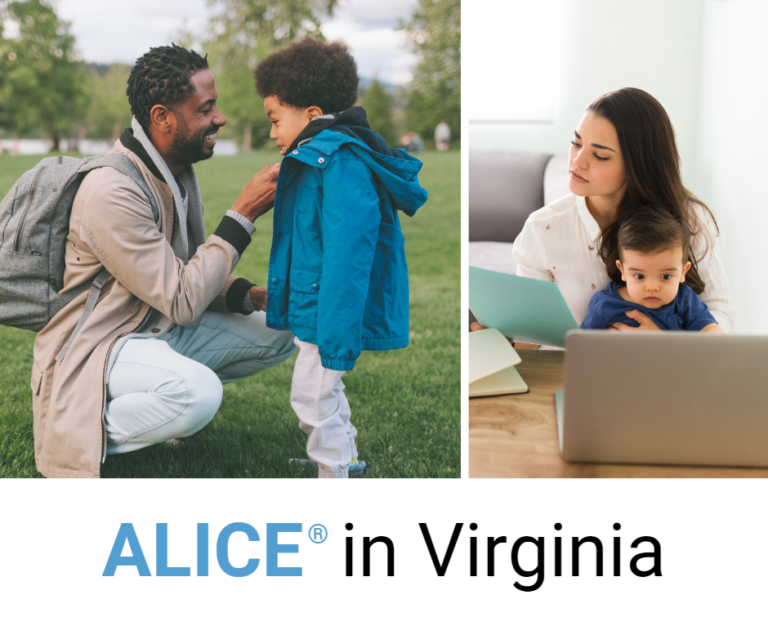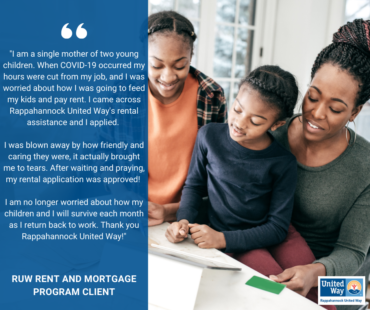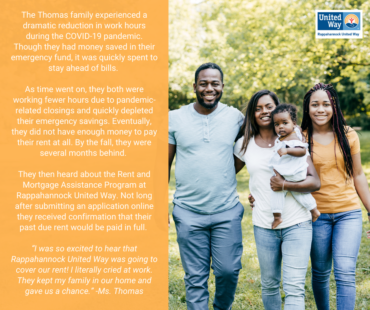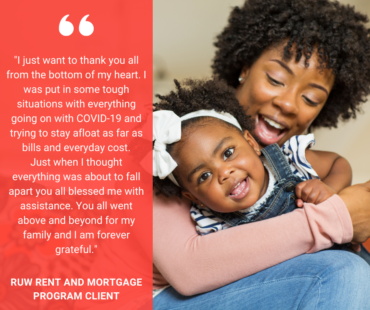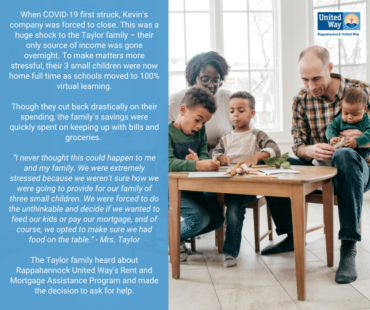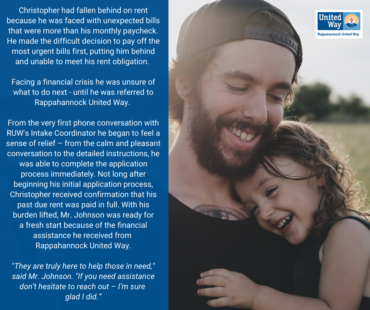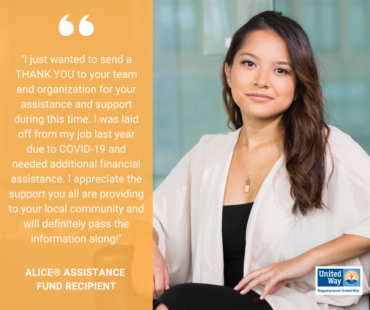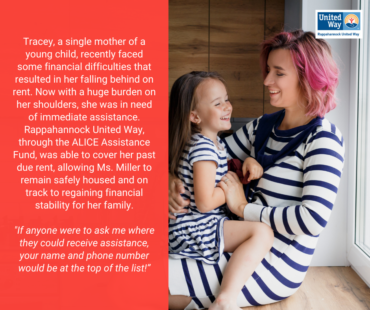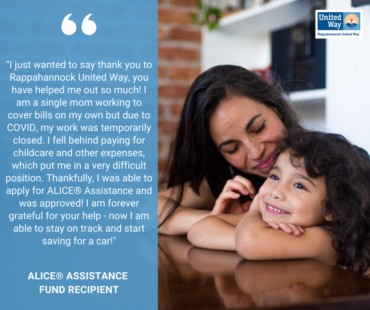ALICE® Awareness Week: November 13-17, 2023
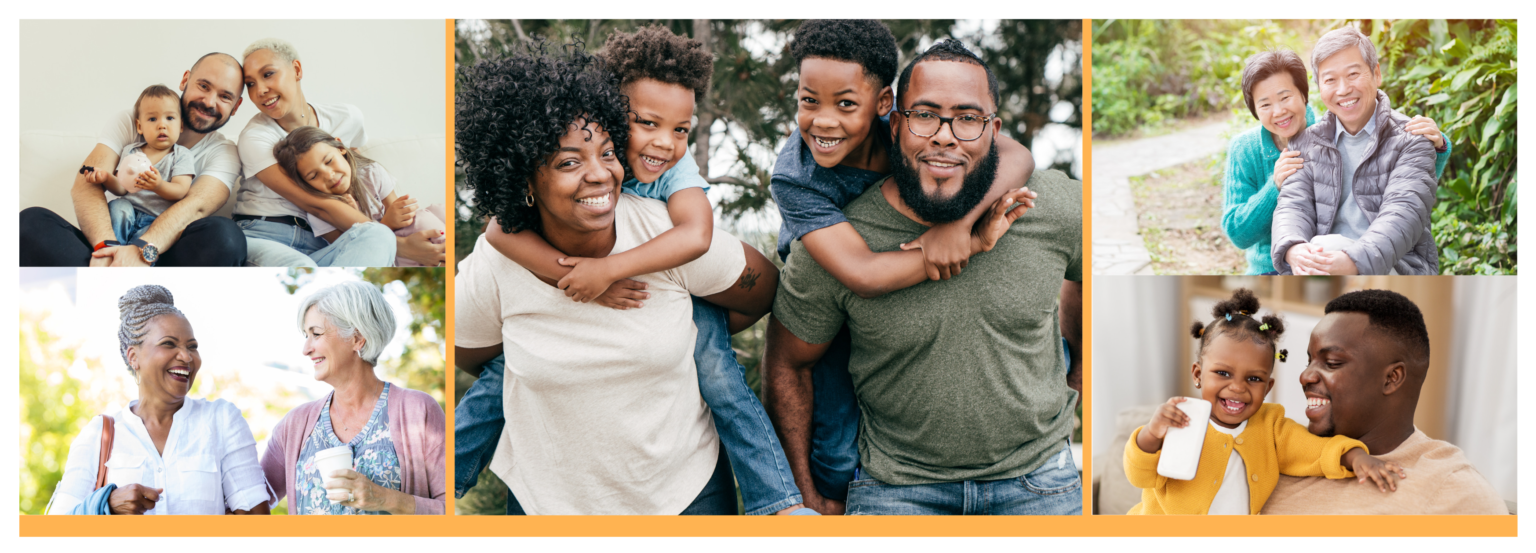
Rappahannock United Way is bringing attention to the thousands of families in our area who are unable to afford the basics for survival, despite working.
Many households in our community are facing financial hardship due to the challenges caused by the continued increases in the cost of living, rising rents and interest rates.
Rappahannock United Way was able to provide direct financial assistance to 92 households (236 individuals) over the last fiscal year (July 2022-June 2023). Of those, 90 cases of rent assistance was provided to help maintain stable housing for these households. In addition, 2 households (6 individuals) received financial assistance with car repairs and car payments to keep their vehicles on the road helping them get to work and school. But our work doesn't stop there.
Join us this week from November 13-17, 2023 as we raise awareness of the financially vulnerable households in our area during ALICE Awareness Week.
Together, we’ll raise awareness for ALICE households in our area.
39% of local households struggle to make ends meet.
29% of these households are ALICE.
ALICE® (Asset Limited, Income Constrained, Employed) is a way of defining and understanding the struggles of households that earn above the Federal Poverty Level, but not enough to afford a basic household budget. ALICE is your child care worker, cashier at your supermarket, gas attendant, salesperson at your big box store, restaurant server, home health aide, and office clerk. For far too many families, the cost of living outpaces what they earn. These households struggle to manage even their most basic needs - housing, food, transportation, child care, health care, and necessary technology.
On average 39% of local households live at or below the ALICE survival budget. That number is significantly higher if you are a person of color (53%) and doubles if you are a single female headed household with children (72%). This is why we launched the new Prosper Mentoring initiative, focusing on women who work – our Prosper team is working with 20 local women, empowering them towards financial stability and prosperity.
ALICE might look a little different than you think...
2023 ALICE Report
Of the 3.3 million households in Virginia, 1,249,732 — 38% — had income below the ALICE Household Survival Threshold in 2021. This includes both households in poverty and ALICE households. The number of households in financial hardship in Virginia continues to be undercounted in official measures. To learn more about ALICE households who earn above the Federal Poverty Level but not enough to afford the basics in your community visit the fully interactive United for ALICE website.
The Virginia ALICE Report 2023 is available to download: CLICK HERE
An Executive Summary is available to download for Planning District 16 which includes the City of Fredericksburg, and the Counties of Caroline, King George, Spotsylvania and Stafford: CLICK HERE
Meet ALICE

Want to help raise awareness of ALICE?
- Read the 2023 ALICE in Virginia report, which provides data to understand the number of ALICE households in Virginia and how things have changed over time.
- Learn more about how our Prosper programs and resources support local ALICE households.
- Make sure you are following Rappahannock United Way on Facebook, Twitter, Instagram, LinkedIn, and YouTube to view and share ALICE Awareness Week content.
- BE THERE FOR ALICE! If you would like more information about how to get involved with Rappahannock United Way's efforts to support ALICE contact: Sarah Walsh, Chief Impact Officer - [email protected]
You can change lives by making a donation online. Every dollar fuels our ALICE Assistance Fund.


